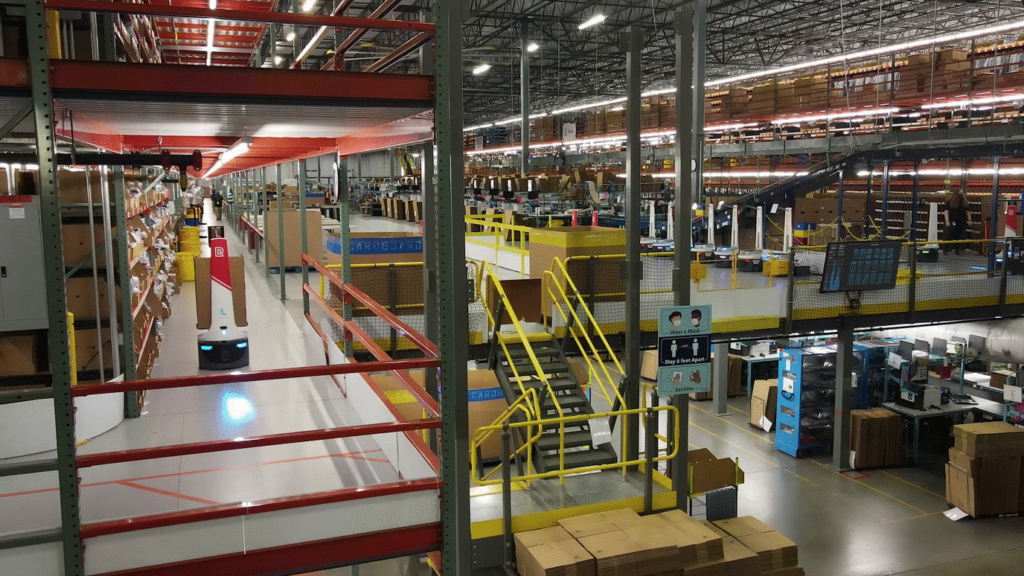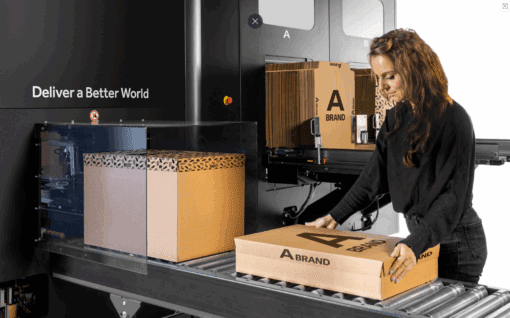WP: How to achieve 400 UPH with Locus Fast Pick
WP: How to achieve 400 UPH with Locus Fast Pick Download Now!
8 Warehouse Processes That Benefit from Automation
Will Schneider, Warehousing and Fulfillment

In 2021, the warehouse automation systems market was valued at $21.7 billion; projections state it will skyrocket to $93 billion by 2031 — an astounding CAGR of 15.7% from 2022 to 2031. Clearly, warehouse automation is completely transforming how warehouses operate.
With the revenue from eCommerce retail expected to surpass $1,700 billion by 2027 in the US alone, making sure your warehouse is up to par with the increasing demand makes perfect business sense.
By automating processes such as inventory management, order picking, shipping, and receiving, warehouses can see a significant return on investment (ROI) in addition to increased customer satisfaction. But with so many warehouse operations that could benefit from automation, where should you start?
In this article, we look at eight areas of warehouse operations that deserve to be automated, how each can be optimized, and provide examples of successful implementation.
8 warehouse processes that benefit the most from automation
1. Inventory management
Automation can help reduce errors in inventory management and provide real-time visibility into stock levels. This visibility leads to improvements in warehouse space management, enabling better forecasting of future needs.
Automation also reduces labor costs associated with manual data entry. Since it automatically tracks and updates any inventory changes, automation helps to ensure orders are fulfilled accurately and on time, which improves customer service.
2. Order fulfillment
Automated order fulfillment systems can process orders quickly and accurately, reducing the time it takes to get products out the door.
Real-time data helps track stock levels, location, and other important information about the items, making it easier for management to know what’s in house and be able to quickly plan restocking.
Sortation systems enable faster sorting of incoming products into categories, and goods-to-person (G2) and person-to-goods (P2G) solutions enable automated movement of products within the warehouse.
Technology such as pick-to-light systems, voice-picking solutions, and barcode scanners can further streamline the processes.
Automation is a big strategic investment, but the good news is since most 3PL warehouse companies are already using robotics and other automation technology, if you outsource your fulfillment and shipping can save you time and cost vs. going it alone.
3. Warehouse layout optimization
There are three steps to optimizing warehouse layouts for maximum automation efficiency:
- Analyze and understand the current warehouse layout and workflows
- Identify high-traffic areas to optimize for faster processing times
- Plan ahead when creating a new layout to anticipate future needs
You can use automation technology such as AGVs or robots to efficiently move items within your warehouse. Whether your warehouse is greenfield or brownfield, make sure that you’ve considered optimal operations in your layout. Your warehouse should have clear pathways that improve traffic flow between sections of the warehouse, and shelves that are evenly spaced to reduce congestion and easily organize inventory.
4. Shipping and receiving
Another major benefit to warehouses comes from automating data entry tasks such as tracking shipments, verifying orders, and calculating freight costs.
Automated data capture solutions – in the form of barcode scanners or other scanning systems – eliminate manual entry errors when entering inventory into a system. Scanners also help speed up the entry of received products into your warehouse management system (WMS).
Automation ensures that items are delivered to the right place at the right time in two ways. Shipping labels can be automatically generated for faster order processing, and real-time package tracking helps prevent parcel loss or damage during transit.
5. Stock picking and replenishment
Every warehouse manager aims to ensure that the right items are picked at the right time while replenishing shelves with minimal effort. Utilize pick-to-light systems, autonomous mobile robots (AMRs), voice-picking solutions, and barcode scanners to streamline the picking and make the most out of your automation efforts.
For the most efficient warehouse, an interleaved workflow is the best solution for automation, where picking and replenishment are performed by the same team of human workers concurrently. The workers simply go to the closest robot and perform the task required, which can be picking or putaway.
Automation also facilitates using real-time data to keep track of stock levels and other important information about items.
6. Palletizing and packaging
Automation plays a key role in palletizing and packaging goods in warehouses. Automated warehouse systems reduce the amount of time needed to pack items, as well as the associated labor costs.
Various robots and vision systems are able to identify palletized objects, allowing for more accuracy and faster order completion times. Once the items are palletized, automated packing solutions group items into bundles or shrink-wrap them for shipment.
However, automated systems don't only save time and money. There is an even more important benefit for employers everywhere — they also reduce the risk of injury associated with manual packing processes that involve heavy or bulky items.
Automated packing and picking can reduce bending, twisting, and reaching motions required from workers during the manual processes.
7. Quality assurance
Quality assurance in a warehouse comes down to ensuring compliance with safety standards and regulations and providing quick and accurate service to its clients.
A modern, automated warehouse uses technology to help make it more efficient. However, it's also important to train employees on proper equipment handling to maximize efficiency and reduce accidents.
Once employees work efficiently along with automated machinery and processes, quality improvements in all service areas are just a step away.
8. Data analysis and reporting
Business data analysis is an invaluable tool that can help companies gain insights into their operations and make better decisions. With the right analytics, businesses can:
- Analyze customer behavior
- Identify trends in sales and marketing performance
- Track inventory levels
- Measure employee productivity
Additionally, business analytics enable managers to monitor key performance indicators (KPIs) such as profitability or sales volume so they can take corrective action when necessary.
With automated data analytics, businesses can gain insights that would be difficult or impossible to obtain manually. The most important benefits of improved business data analysis are increased efficiency in decision-making processes and more accurate forecasting for future growth opportunities.
With automated data analytics, you’ll be able to view mission-critical predictive analytics and actionable insights about your warehouse. With that order information, you can proactively assign workers and automation solutions to the busiest areas.
Types of warehouse automation technology
Today we have many solutions available to optimize warehouse operations, improving accuracy and efficiency while reducing labor costs.
- G2P and P2G solutions use robots and automated guided vehicles (AGVs) to move items within the warehouse, while sortation systems help streamline the process of sorting items into categories.
- Pick-to-light systems provide workers with real-time information on where and how to pick items from shelves, and voice-picking systems allow workers to receive verbal instructions for order-picking processes.
- Barcode scanners help with automating inventory management tasks such as stock-taking or cycle counting. With these technologies, warehouses can drastically reduce time spent on manual labor and increase accuracy simultaneously.
Key takeaways
There are numerous benefits to implementing automation in a warehouse. By leveraging the latest technology, businesses can gain a competitive edge, reduce their costs, and ensure that their operations run smoothly and efficiently.
Automation can be a powerful tool for companies looking to improve their service, reduce costs, and enhance the quality of their operations.
About the Author
Will Schneider is the founder of InsightQuote, a match-making service for B2B services, and writes informative posts about fulfillment services at Warehousing And Fulfillment. He is passionate about helping businesses find the right solutions to improve their operations. When not working, Will enjoys coaching youth basketball.




